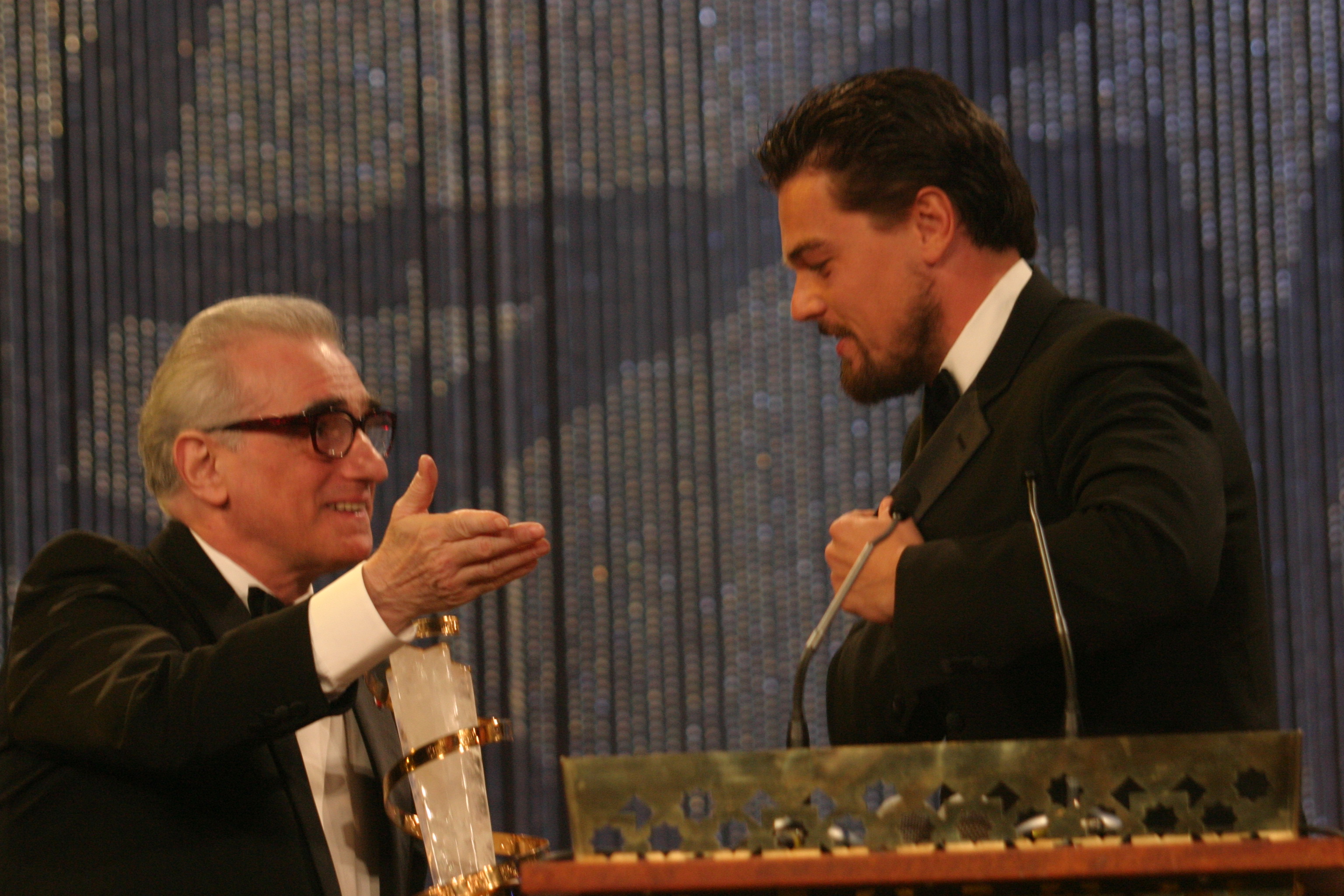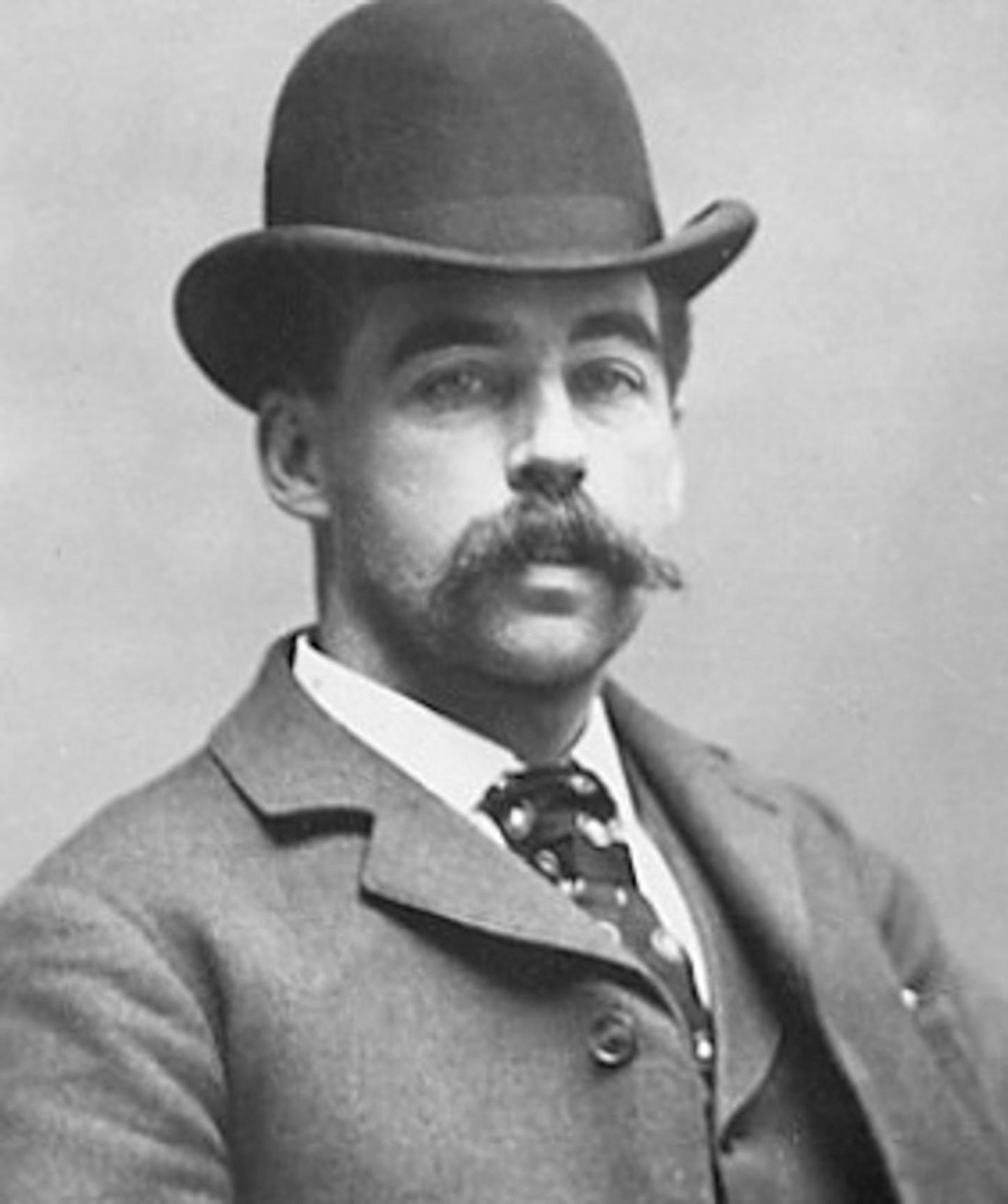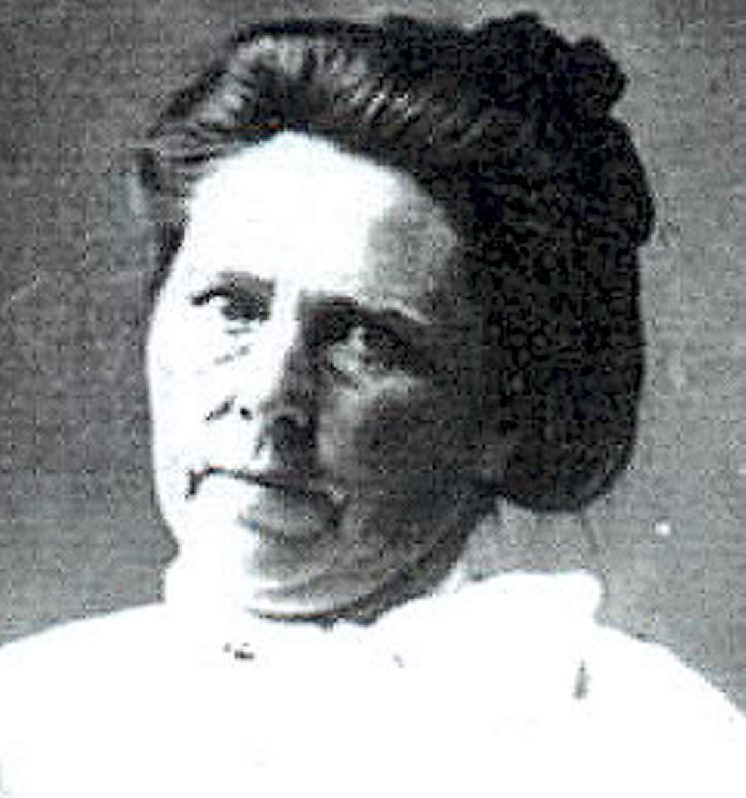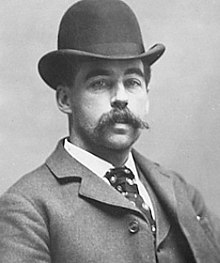
Here’s the latest in my short stories collection that re-imagines the childhood of Dr. H.H. Holmes–Chicago’s (allegedly) first serial killer. If you enjoy it, you may like the others! Click here to read them.
Henry Webster sat at the top of the steps, just outside his attic bedroom. He was supposed to be getting ready for bed, but he learned much from his nightly eavesdropping. The New York Tribune, filched from the kitchen table after breakfast, lay neatly folded next to him. The headline for September 30, 1874, screamed from the page: “Little Charley Ross still missing!”
“I agree, it is quite disturbing and unsettling for a small child to go missing.” The voice of Henry’s father floated up the stairs. Henry heard the familiar clink of a tea cup being set down.
“It is more than unsettling, Levi. It’s more than disturbing. Between this poor four year old–” That was his mother, before his father interrupted her.
“Charley Ross went missing from Philadelphia, Theodora. That’s quite different from our little Gilmanton.”
A tea cup–Henry presumed it was his mother’s, given the force with which it was put down–clattered against a saucer. “Our little Gilmanton doesn’t know who bludgeoned Nancy Robertson, and I don’t think Ellen should go to work any longer.”
“Mother,” Henry’s sister, Ellen, began. “I understand your concern, but that was months ago, and Nancy was only twelve. Nothing has happened since then. Besides, her body was found past the woods near the creek. I walk the main road from our home to Dr. White’s office. No one is going to crack me over the head–”
“Ellen, do not speak so flippantly of that poor girl’s demise,” her mother interjected with a tone familiar to all of the Webster children.
“No one is going to murder me–”
“Ellen,” her father said. “I think that’s enough talk of murder. Your mother and I will discuss this further.”
A chair scraped against the wood floor. Henry could picture Ellen standing up and placing a hand on their father’s shoulder. She always did when she wanted her way.
“Father, Mother, please just remember that working for Dr. White is the only way I’ll be able to go to Oberlin. I’m saving all of my money–all of it–to pay for my schooling.”
More tea cup clinking. A squeaking floorboard indicated Ellen was in front of her bedroom door. The door shut.
His parents resumed their conversation.
“She’s right, Theodora,” Henry’s father said. “We’ve had several bad years in a row on the farm now. Not that I thought my daughter would want to go to college and my youngest son would want to be a doctor. Thank the Lord Arthur wanted to follow in my footsteps.”
“Levi, a young girl was just…just murdered in our town. I don’t want Ellen anywhere alone. It’s not safe.”
“Thea.”
Henry recognized the change of his father’s voice. The tone, coupled with his father using her name’s diminutive, meant Levi Mudgett was about to use his skills of persuasion.
“Dr. White said that he would be willing to close up shop and take her with him if he were called out. That way she would never be alone.” Henry imagined his father taking a well-timed sip of tea. Clink. Henry smiled. He was right. “Our daughter is bright. And times are changing. If you’d had the opportunity to further your schooling…”
There it is, Henry thought, smirking. The last nail in the conversational coffin. His father was nothing if not persuasive, and appealing to his mother’s wistfulness about school, well, there was a reason Ellen and Henry usually got their way–at least outside of the house. Their father was a master of manipulation, and he taught them well.
Some people didn’t like the Websters because of that family trait. They thought them untrustworthy. Henry saw it differently: he felt most people in Gilmanton were easily led.
His sister was just as intelligent, but she was honest to a fault. She didn’t believe in convincing people cunningly; she just wanted to put it all out there and let people make their own decisions. Of course, if it meant getting a new hair ribbon or going to Philadelphia with her friend, Elizabeth Dean, when her family went there for a whole week, Ellen was not above using manipulation.
Henry thought that letting people make their own decisions was stupid. That was fine at the Webster dinner table. They were all smart, and for as long as Henry could remember, his parents engaged their children in philosophical debates daily. But not everyone was smart. School showed him that. And those people needed to be led to the right conclusions, not left to their own free will.
Henry stood slowly and entered his room, carefully shutting the door behind him. The missing boy and dead girl didn’t cross his mind. Instead, his thoughts turned to college. He, too, would have to find a way to pay for it. He knew that once Ellen left for Oberlin, he’d be able to take her place at Dr. White’s office, but that was still a year away. He smiled at the thought. He was already at the physician’s office on a near-daily basis, gleaning whatever bits of information he could from the doctor. To get paid for something he enjoyed so much seemed too good to be true. But it was true. And Dr. White said he’d write him a reference for any medical school he wanted to go to. The challenge would be affording it.
Henry’s parents were comfortable, but not well off. Raising four children was not a cheap endeavor, and though Levi Webster inherited his farm and house from his own father, Henry noticed the pursestrings had closed tighter the past few years. Many nights he overheard his parents discussing the failed crops, the sale of more land, and the question of going to the bank. Inheriting the farmstead meant they lived in a large home, but not the largest home in Gilmanton. They had nice clothes, but not the nicest. They had one servant, but not four like the Dean family. They certainly didn’t take week-long trips to big cities.
Henry vowed his life would be different. He’d have the biggest home, the nicest clothes, and as many servants as he wanted. He’d remind Gilmanton who the Websters really were: one of the founding families of the town. Over time, they’d lost their power and clout to others, but Henry would get it back. Being a doctor was just the beginning of his plan to restore his family’s legacy.
#
“That’s terrible about Marshall Oberhund.” Henry’s mother was serving oatmeal from the glowing wood-burning stove.
“Miss Oberhund’s brother?” Henry asked. He took a seat next to his father, across from the window where the sun created its own stained glass in the mornings. Ellen was primping in her bedroom. Their brother Arthur was already in the field.
“Yes,” his father said. “He broke his back and won’t be able to help James Collins with his stove business.”
Henry’s eyes crinkled.
His mother put a plate of warm bread on the table. “That’s going to put him in a bad spot.”
“I imagine so. He does a fair turn of business here, but he also travels all the way up to Lake Winnipesaukee.”
“And with winter coming up,” Henry’s mother said, sitting down at the table with a sigh.
Henry took a slice of the steaming bread.
“Father, do you think I could help Mr. Collins? You’ve taught me all about our stove.”
“I thought you were going to work for Dr. White, Henry?” his mother asked.
“I will take Ellen’s place, but that’s still a ways off.” Henry carefully let his spoon rest against his oatmeal bowl. “I think I need to start now to save for school.”
The unfamiliar spread of a smile crossed his father’s face.
“I can’t say I’ve ever seen someone so young with such big plans for himself, Henry.” He sat back in his chair, looking over his youngest son. “On one condition. You’ll come back here to be the town’s doctor–and use that brain of yours to help your brother run this farm.”
Henry proudly returned the smile. “Yes, sir!”
“I’ll speak with Mr. Collins today, after I walk your sister to town.”
#
Within three months, James Collins allowed Henry to answer calls on his own. He had an uncanny ability to remember facts and figures, so his knowledge of proper ash disposal and the various ignition temperatures of wood paralleled that of his employer. It was a dirty job, different from the type of dirty Henry got when dissecting or helping Dr. White put more samples in jars. But he was making nice deposits into his savings account each week, even now that school had started.
One day, Henry had a call to go to the Lintons’ house. The Lintons were becoming a near-weekly occurrence. Mrs. Linton didn’t want to have to empty ash and still, in spite of Henry’s attempts to educate her, had no concept of what the flue and dampers were for. As a result, there was often smoke billowing into her kitchen.
Henry knocked on the door.
“Oh, Henry. I’m so glad to see you. I just don’t know what the problem could be this time.” Mrs. Linton rubbed her hands on her blackened apron. Henry dutifully lugged in the ash bin and his brushes. A baby squalled from the upstairs. Mrs. Linton’s face pained.
“Little Malachi is awake. I’ll leave you to this, Henry, if you don’t mind I tend to the baby?”
“Of course, Mrs. Linton.” He smiled.
The kitchen was indeed smoky, and soot had settled on every still surface. Henry opened up the stove’s door. His eyes widened in disbelief. Shoving more fuel in is not going to make a fire, Mrs. Linton. He shook his head and put on the thick gloves Mr. Collins had given him. Placing the ash bin below the door, he pulled out pieces of wood. Then he turned his attention to the massive amount of ash.
After a thorough cleaning, Henry added some small pieces of wood–chips, really–for tinder, and then added small logs on top of those. He lit it, waiting for it to catch. Staring into the dancing flames, Henry’s eyes snapped open. He looked down into the ash bin, recalling a conversation he’d had recently with Dr. White.
Fire destroys everything. It all turns to ash. Nothing left behind. An otherworldly smile crept onto Henry’s face.
“Mrs. Linton,” he called out. “I’m all finished here.”
“Thank you, Henry. I don’t know where I’d be without you.” She tried to smile, but her eyes were rimmed with darkness, and not just from the soot that settled in the crevices of her face. “Here you are.”
Henry wrote her a receipt for the two dollars, thanked her, and left.
#
A gust of cold air ran its icy fingers through Henry’s hair. He crossed the yard of dormant grass and followed the creek to his father’s barn. As he poked past a mound of hay, his heart skipped a beat. He saw exactly what he’d hoped for: a dead mouse lying in the trap.
Time to test his theory.
It was unusual for Henry to have the house to himself, but today his parents were in town for a church meeting, and Ellen was working at Dr. White’s. He brought his barn-find into the kitchen and stoked the stove’s fire. Waiting until the flames licked the top of the stove’s firebox, Henry stared at the dead mouse.
The fire burning at a rate sufficient to Henry, he quickly yet gently put the mouse on the grate and closed the small door. Fifteen minutes passed before he opened it again. The mouse was gone. He scooped the ash to be sure, sifting it side to side. Part of a minute skull, charred and misshapen, remained.
Ashes to ashes, dust to dust.
#
A week later, Henry sat in his usual chair in Dr. White’s private office, inspecting the articulated skeleton. Ellen was compounding the doctor’s “Soothing Syrup for Babies and Toddlers” at the apothecary counter.
The doctor’s voice shook Henry from his thoughts. “Hello, Henry. Interesting news from Philadelphia today.”
Dr. White’s outstretched hand held the Philadelphia Inquirer. A small headline read, “Sir Henry Thompson and British Cremation Society Cremate First Body.” Henry’s eyes widened. He snatched the newspaper.
“Sir Henry Thompson, backed by the British Cremation Society and Queen Victoria herself, cremated the first body in England on December 6. Citing cremation as a more hygienic and efficient option for dealing with remains than burial, the Cremation Society still has a large number of adversaries against this questionable treatment of the human body.”
Henry sat back. Silence permeated the small room.
“Dr. White,” Henry began. “What is the ignition temperature of the human body?”
Such a conversation was forbidden at home. The Methodists, which included Henry’s parents, still saw cremation as desecration of the human body, and thought it to be against God’s will. But Henry knew that he could talk about these things with Dr. White. The two of them understood that decaying, diseased bodies at funerals could cause illness for the mourners. British research also questioned what happened to the water supply when human remains were buried near streams, rivers, and lakes.
“Roughly 700 degrees for ignition. Sir Thompson’s crematory registered over 1,000 degrees on his thermometer during the cremation.”
Henry cocked his head, his brain calculating. “Depending on the type, it takes between 300 and 700 degrees for wood to burn completely.”
“The crematory is specially built for the increased heat–and to maintain it within.”
Henry looked back at the newspaper and read.
“All that remains is ash and bits of bone.”
“Isn’t science incredible, Henry?” The doctor sat down at his desk. “I told you we were on the cusp of a new world.”
#
Henry didn’t eavesdrop from the top of the stairs that night. Instead, he shut himself in his room, continuing to marvel over Sir Thomas’ crematory. Pulling the small box from beneath his bed, he opened it and touched the marble and button. He stroked the white leather glove, the strip of leather from a toy, and the butter-yellow thread. Then, he caught sight of the mouse’s skull. Henry’s eyes narrowed. His mouth formed a sneer. Another piece of his plan fell in place.





 Who was H. H. Holmes? Many things. A physician. A brother. A master manipulator. Chicago’s first serial killer. The source of my unending curiosity for the past few years.
Who was H. H. Holmes? Many things. A physician. A brother. A master manipulator. Chicago’s first serial killer. The source of my unending curiosity for the past few years.


